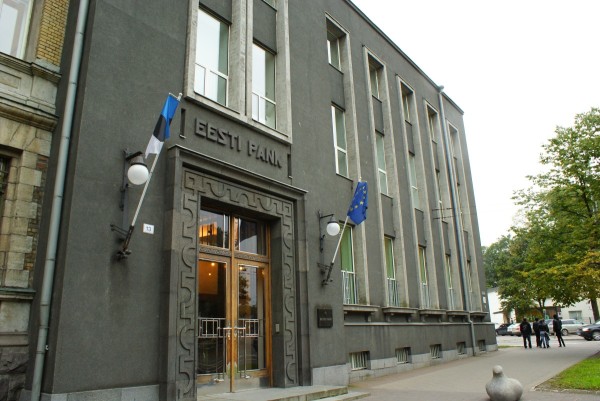Inflation has declined from a peak of 25 percent in August 2022 to 11.2 percent in May 2023, but it remains among the highest in the euro area. Over time, inflation has become increasingly broad-based, with core inflation also rising rapidly, despite the widening negative output gap.
During 2023, growth is expected to recover alongside only gradual disinflation. Driven by consumption and exports, growth is expected to improve during the second half of the year, but earlier weakness will leave 2023 GDP 1.6 percent below its level a year earlier. A fiscal impulse of about 2½ percent of GDP is expected to boost growth in the near term, but it will also work at cross-purposes with monetary policy and counter the effect of higher interest rates on inflation, which is expected to decline only to an average of 9.7 percent in 2023.
In IMF view, the economic effects of the war shock have exacerbated competitiveness erosion. Estonia has made remarkable progress over the past two decades, achieving steady convergence towards more advanced EU economies. However, while the external position is assessed to be broadly in line with medium-term fundamentals and desirable policies, signs of erosion in external performance have emerged in recent years, reflecting rapid growth in unit labor cost and real exchange rate appreciation. Russia’s invasion of Ukraine triggered a large rise in inflation, supply chain disruptions and slower growth in key trading partners in the Baltic region. In Estonia, these developments, combined with fiscal tightening in 2022, have led to a sharp economic downturn, while deceleration in productivity has further added to competitiveness pressures.
Advertisement / Reklaam
Advertisement / Reklaam
The war-led shock may leave scars. A very large fiscal impulse in 2023 along with gradually stronger external demand is expected to support the recovery under the baseline but will also leave inflation well above euro area average. In turn, high inflation is likely to exert pressure on wages which, combined with declining productivity growth, may further erode Estonia’s competitive position over time. As a result, while the economy managed to recover swiftly from the pandemic, staff project a more permanent scar from the consequences of the war over the medium term, with growth failing to return to its pre-crisis average, absent tighter fiscal policy and proactive structural reforms to support productivity.This baseline is highly uncertain and subject to domestic downside risks. Fiscal deterioration might become entrenched, above and beyond what is already assumed under the baseline. While supporting near-term growth, an excessively loose fiscal policy would undermine Estonia’s disinflationary efforts and further weigh on its medium-term competitiveness prospects. Tighter labor market conditions, rapid wage growth triggered by generous public sector pay rises and waning productivity may exacerbate these adverse dynamics.
External downside risks are also significant. A significant tightening in global financial conditions may cripple bank credit and trigger a global recession. Major central banks could loosen monetary policy prematurely, leading to a de-anchoring of inflation expectations and increasing the risk of a wage-price spiral in Estonia’s tight labor market. An accentuation of geopolitical tensions in the region or other war-related effects may also weigh on the outlook.
Estonia’s policy mix needs to be re-calibrated to support a more sustainable recovery. A much less stimulative fiscal policy should be considered. Alongside targeted financial policies to underpin financial stability and structural reforms to raise productivity, address labor market shortages, and promote the green and digital transition, this policy mix will help Estonia achieve sustainable and inclusive growth over the longer term.
Advertisement / Reklaam
Advertisement / Reklaam
In the near term, a neutral or—at most—an only slightly expansionary fiscal stance is needed to contain inflation. As energy prices recede, consideration should be given to phasing out the most recent increases in family allowances while retaining targeted support to the most vulnerable groups. Containing the expansion of the public sector wage bill—including by limiting the flexibility of line ministries and local authorities to raise wages—is critical. Re-calibrating current spending towards productivity-enhancing capital spending would help safeguard competitiveness. Finally, the case for bringing forward some of the tax hikes envisaged from 2024 should be explored.Over the medium-term, fiscal policy should preserve buffers to counter future shocks and spending pressures. Staff’s recommended fiscal path entails reaching a balanced structural budget over the forecast horizon through an improvement of about ½ percentage point of GDP a year, anchored in the national fiscal rule. This path requires additional consolidation measures, including means testing social programs, saving on government operational expenditures, and a more efficient execution of capital expenditure.
Financial stability risks appear limited so far, but close vigilance is warranted amid rising interest rates. Comprehensive and frequent bank portfolio reviews should be accompanied by rigorous stress tests, including to assess risks stemming from wholesale deposits, funding through online deposit platforms, cross-border lending, and broader spillover effects from real estate markets in the region. Less-significant institutions, which have more limited buffers, should be closely monitored. The earlier tightening of countercyclical buffers was appropriate, given the need to preserve robust buffers against sustained increase in credit and house prices. However, policies should be ready to respond to credit supply disruptions. Building on recent progress, systems should be further enhanced to address ML/TF risks.
Advertisement / Reklaam
Advertisement / Reklaam
Targeted structural reforms would help raise productivity, address labor market shortages, and promote the green and digital transition. Encouraging an increase in the share of private sector R&D to a level closer to the EU average would accelerate the evolution towards higher value-added production and exports. Addressing labor market shortages and closing skill gaps, especially in the ICT sector, would further strengthen long-term growth prospects. Conducting a review of recently enacted social welfare reforms along with progress towards reducing the gender pay gap would support more inclusive growth. Finally, phasing out oil shale in energy production, introducing a car registration and road tax, and extending ETS coverage would support a more ambitious green transition.https://www.imf.org/en/News/Ar...

























